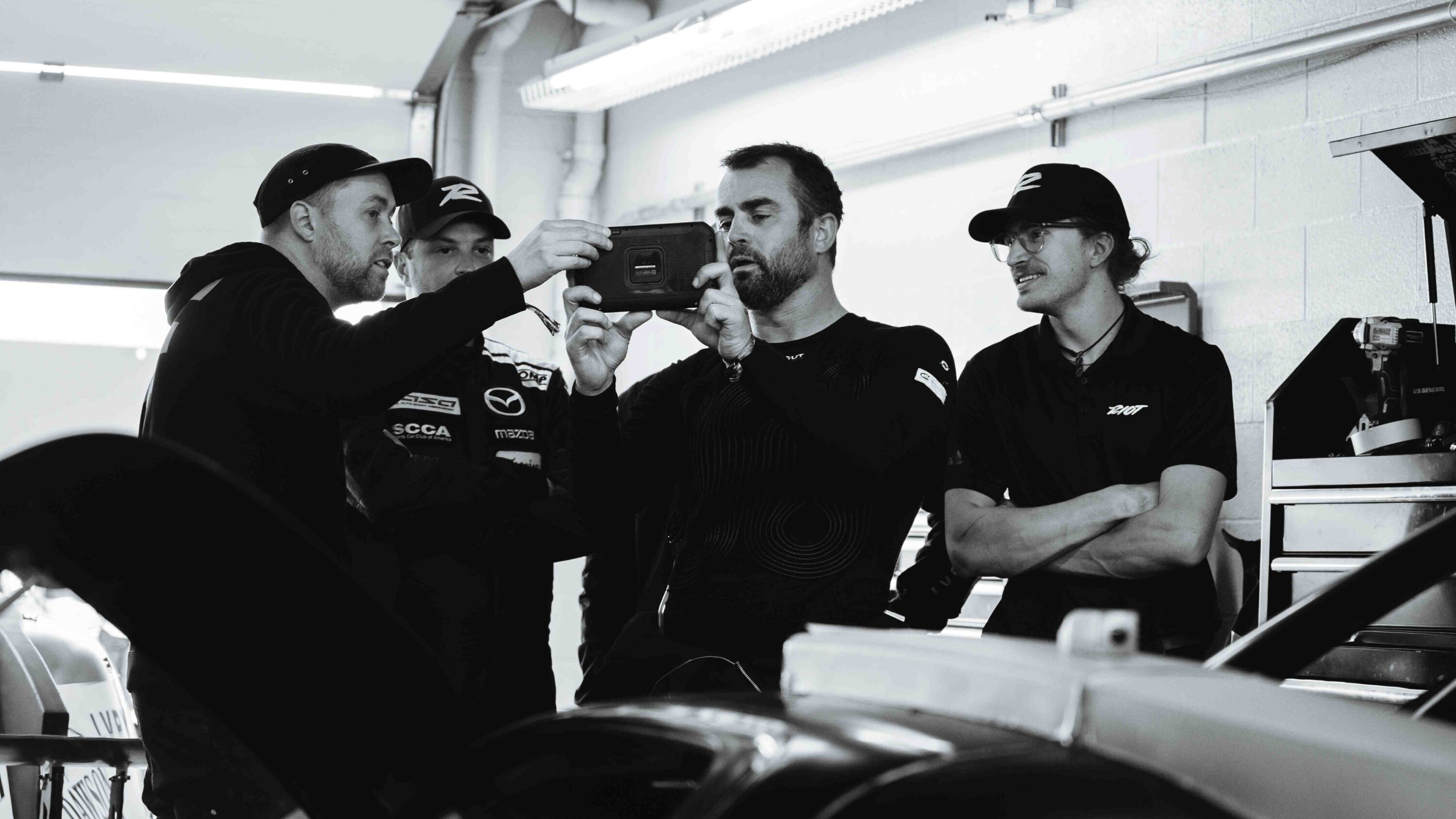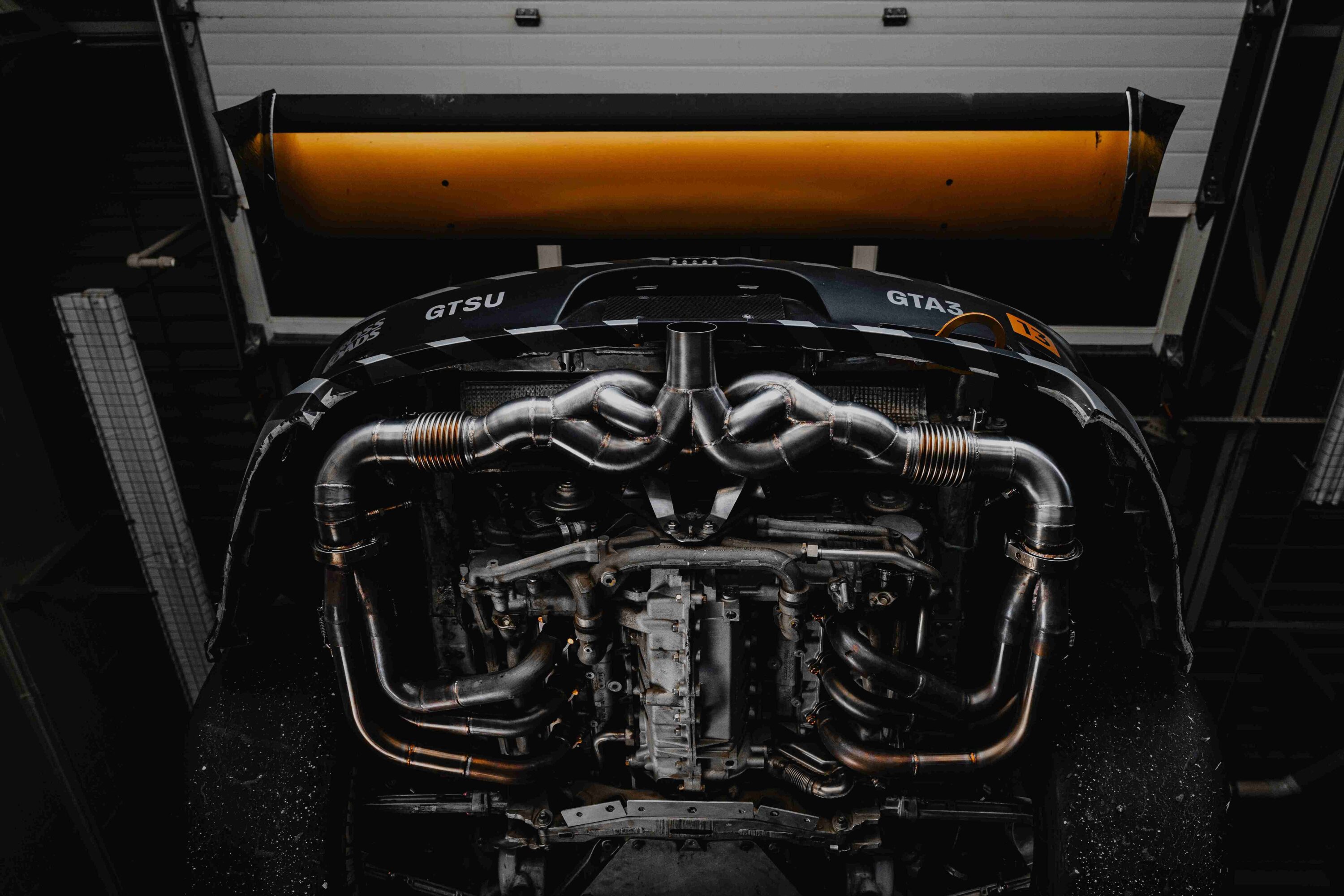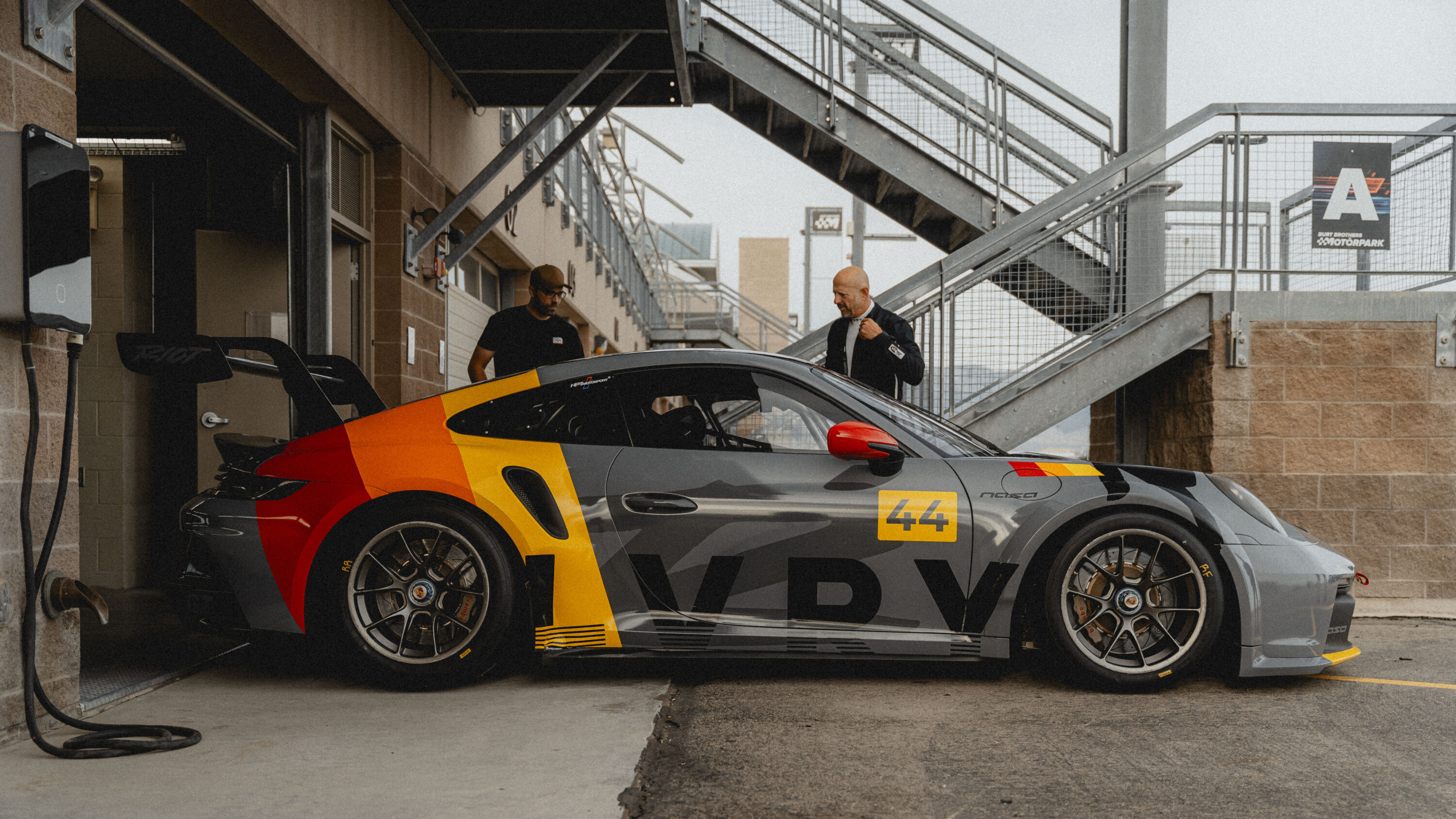Photo Credit: Vicious Corvus | Zach Hunter Owens
The out-lap begins as soon as you exit the pits to begin your session and, for most track, will begin a corner or three into the track at some point where it’s easy to blend-in with traffic.
Assuming you’re starting a session with the rest of your run group, meaning that nobody is already running hot laps as you enter, what is your approach? Do you have a consistent approach, or do you just kind of wing it?
The out-lap of any session is very important in getting both the car and driver ready to perform. It’s your first chance to evaluate the car, track, and driver – which should give you important insight into how to approach your initial hot laps. Furthermore, your out-lap for a practice session will vary greatly between practice and the race.
A quick punch list of what to do on your out-lap:
- Get the engine and drivetrain up to temperature – there is such thing as “too cold”
- Verify oil pressure and other gauges are where you expect them to be
- Warm-up tires and brakes
- Evaluate conditions – grip, debris, and other situations you need to take into account
- Get in the right mindset – what is your goal for this session?
But first… story time!
My First Race
NASA Utah, East Track at Utah Motorsports Campus, 944 Spec. I set pole by a healthy margin over my two competitors for the day for my first race – woohoo! I was pleasantly surprised. We had a mixed-group start and we were roughly mid-pack, all of the 944s close to one another.
The group’s out-lap pace was quick – I didn’t really have time to do many of the techniques I’ll describe below, so it’s good I wasn’t on brand-new tires! As we came through Clubhouse (T13), we were somewhere in mid-3rd gear pace, down to 2nd into Wind-Up, and then… BRAKES! The group accordion-snapped hard and I had to jam to a near-stop, find 1st gear, and then try to catch back up.
By the time the green flag flew, I was back to 2nd gear but still flustered from nearly nailing a Miata ahead, but we were off! Suddenly, though, the pack left me in the dust. I looked around at my gauges for what seemed like an eternity to see my RPMs pegged – I forgot to SHIFT!
My two 944 Spec competitors overtook me as I slammed into 3rd. I got into my groove pretty quickly to spend the entire race up their bumpers, clearly capable of a faster pace but not yet skilled-enough to time a run and make a decent pass.
I’ll never forget that first race start and it taught me a lot!
Warming-Up the Engine and Drivetrain, Verifying Gauges
Unless it’s very cold out, this one is very easy, but worth mentioning. Regardless of if it’s 30F or 100F, get your warmed-up by idling in your pit spot or on grid. My rule of thumb: idle the car until the thermostat opens and my water temp needle starts moving. If it’s cold out, idle it longer!
As I ease out into the hot pit and onto track, I’m going to short-shift a bit and work through the gears, feeling things out. I’ll avoid going full-throttle if the car temperature has dropped enough for the temperature gauge to not register any temperature.
Along with this, have a good idea of what ‘normal’ looks like for your car at different temperatures – if it’s on the colder side, what does oil pressure look like? Where should oil pressure be when the car is warm, but not heat-soaked from a session? Remember that oil pressure will drop at idle versus at full-throttle – know those numbers.
Same thing goes for other gauges if you have them. For a race, you should already have a good sense for how the car is performing on the day and be able to verify things are looking good with a cursory glance as you begin the task of warming up yourself, the tires, and brakes.
Warming-Up the Tires by Warming Up the Brakes
First: “The weave” that we see F1 drivers and other pros do is iconic – by weaving back and forth at relatively low speed, the driver is either scrubbing-off the shiny surface off a fresh set of tires or clearing debris (pebbles, rubber) from relatively cool tires. They are not, I repeat not, warming up their tires! The amount of heat worked into tires by weaving at warm-up pace is negligible compared to a far more effective technique: braking.
Braking builds far more heat into the tire because of the fact that brakes slow down a mass of rolling metal and driver from a high speed to a low speed. Think about it: if you’re warming-up on a pace lap before a race, are you going through a corner at maximum speed? Not likely. You’re not likely to be able to even pull the regular amount of G’s because your tires aren’t warm yet!
So – here’s what I do on a fresh set of rubber on my out-lap:
- Once I’m on-track, I do a few quick weaves to scrub the faces of the tires, removing most of the shiny layer of the tires
- Accelerating near the car ahead and then pulling off-line and braking: first moderately, then harder, for about 3-4 straights
- After 1-2 hard acceleration/braking segments, I lag back and get a run through a corner at near race-pace, getting a sense of grip and ensuring I load-up the outside edges of my tires – this is only possible by pulling some solid lateral Gs, which isn’t possible by weaving at slow speeds
- With the tires and brakes warm, I’m going to position myself for qualifying or begin stacking-up to begin the race.
- If it’s colder than 45-degrees outside (or raining) I’ll continue to drag the brakes lightly to mitigate the rapid cooling that will happen
Evaluating Conditions
I already mentioned some things to consider if it’s extremely cold out or raining, but there are other things to consider as you’re working heat into your tires and brakes.
- How is grip? Better than last session? Worse?
- Are there any gravel patches from the session beforehand that will make off-line driving a hazard for the first few laps?
- Some tracks/groups will hot-tow a disabled vehicle from a previous session while the race group forms-up – be heads-up for any flags and be prepared to go around the EV crew
- If it’s raining – any puddles of water? Rivers of water? Where is it raining (and not)?
You get the idea – be heads-up on if the track is ‘optimal’ or if there’s some hazard in T5 that you need to remember while dicing for those first few early position-exchanges.
Get in the Right Frame of Mind
As you approach the point where the pole-sitter (which might be you!) slows down to get the group formed-up… what’s going on in your head? This is something that deserves it’s own article, even an entire chapter of a book, but here are some things to consider:
- What is your race strategy? What is your goal? This is perhaps the most important thing to get straight before you start the race so you can make the right choices throgout.
- Will you get in-line with your fellow drivers, however the group sorts into T1? This can be a good strategy to build a gap to mid-packers or a competitor who is close behind who you’re trying to overtake in season points.
- Maybe you’re going to try an early move on the row ahead, creating a melee (figuratively) that bunches up the front cars.
- Maybe you’re in the back of the pack due to some qualifying issue – what’s your approach going to be? (hint, don’t try to dive-bomb to P1)
- Are you on the inside or outside? What effect does that have on your line and possible speed coming out of critical corners if you’re still side-by-side?
- What gear is correct? 2nd or 3rd? This takes practice and knowing the pole-sitter’s preferences. What does this mean for those first few shifts down the front straight and into T1?
All of these things take practice, trial-and-error, and… are a lot to pack into the first 30 seconds! Start by getting clear on the first one, then work on some of the others over time.
Many Things to Manage; How to Get it Right
My first race was a lesson in being more heads-up and not trying to be tight to the field ahead when it’s strung-out. It also taught me that the race start was a thing to manage all on it’s own. Over time, I’ve gotten much better at race starts, never forgetting to shift for so long again and, fortunately, never getting surprised by a snap-accordion from the pack ahead.
Start by remembering that no races are won in turn one, but many are lost there. So be conservative if you’re new and avoid disaster. Then find the things that you need to tweak until you consistently feel like you and your car are 100% ready to go when the green flag flies!






